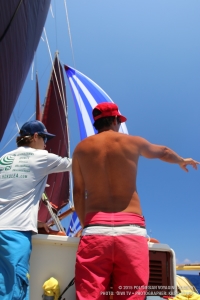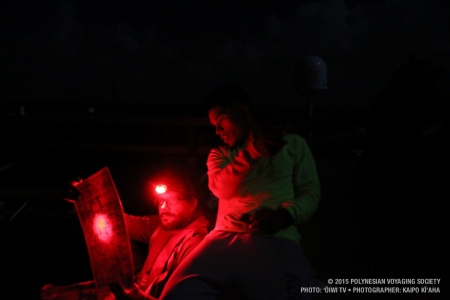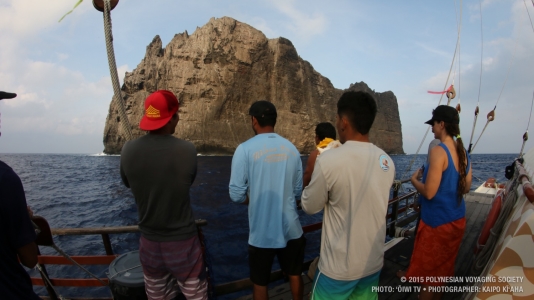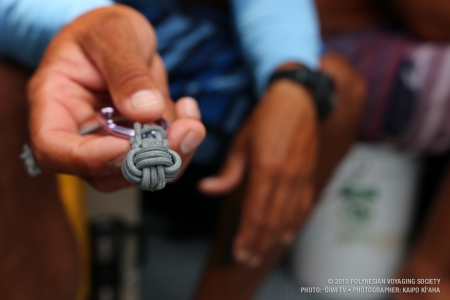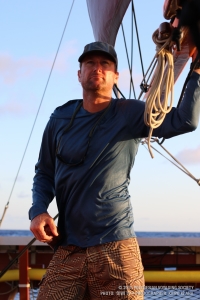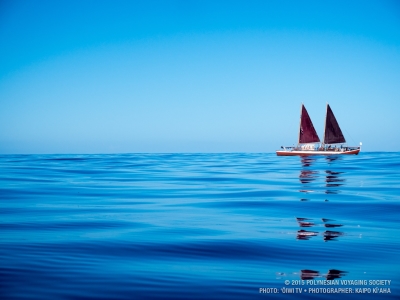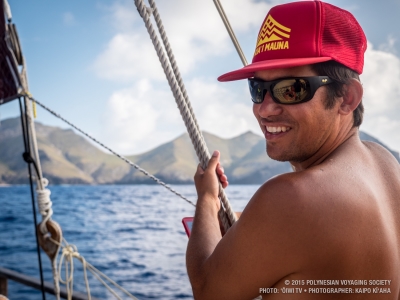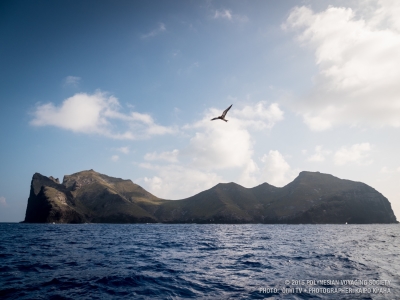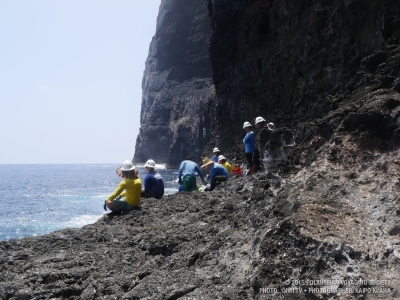Hikianalia Update | Voyaging to Papahānaumokuākea
- Posted on 8 Jul 2015
- In Education, Hikianalia Updates, Teachers, Updates
Mālama Honua Worldwide Voyage crewmembers return from the Papahānaumokuākea Marine National Monument having completed the first joint expedition expressly combining traditional navigators, cultural practitioners, and government and university researchers.

The Polynesian double-hulled sailing canoe Hikianalia and modern research vessel Searcher embarked on an ambitious expedition to conduct various activities, including: navigator training for future legs of the Polynesian Voyaging Society’s Mālama Honua Worldwide Voyage; shoreline ‘opihi (Hawaiian limpet) counts; reef fish surveys; and exchange of ideas on how to better manage Hawaiʻi’s marine resources.

“The best part about the joint expedition was being able to talk with the Hikianalia crew about ways to mālama, or care for, our ocean resources,” said Makani Gregg, cultural researcher traveling aboard the Searcher. “We were able to get on the shoreline with each other and count ‘opihi on some of the healthiest shorelines in the world.”

Hikianalia’s voyage to Nihoa was yet another step toward the important and necessary transition of leadership to the next generation of voyagers and navigators. For navigator Kaleo Wong, it was his first time as captain of a voyage.
“Nihoa and Mokumanamana have always been places of high spiritual mana (power),” said Wong. “Situated near the transition of pō and ao (the realms of light and dark, and life and afterlife), they remain sacred wahi pana (celebrated places) and allow us to practice many aspects of our culture, one of which is gaining vital open ocean navigation experience while remaining relatively safe in our home waters of Hawaiʻi.”
Once at Nihoa, team members from Hikianalia and the Searcher surveyed reef fish habitat, conducted ‘opihi monitoring, and offered mele (chants) and ho‘okupu (gifts) to honor the islands.
Chris Bird, Ph.D. and Patricia Crockett, researchers with Texas A&M University, continued their work on ‘opihi, a Hawaiian delicacy and culturally important species, making some interesting finds.

“It appears that Nihoa is the ‘Fort Knox’ of ‘opihi in terms of genetic diversity,” said Bird. “This is significant because ‘opihi populations in the Monument could be more resilient to anthropogenic effects like ocean acidification and disease outbreaks than other populations.”
This ongoing research continues to provide managers with insights into how to make better-informed management decisions concerning ‘opihi harvesting in the Main Hawaiian Islands.
“After six years of conducting research on ‘opihi in the Northwestern Hawaiian Islands, it is apparent that there are 99.9% more ‘opihi on the shorelines of the Monument than those of Oʻahu,” said Bird. “On Oʻahu there is an average of one ‘opihi per square meter, versus an average of 100-200 ‘opihi per square meter in the Monument. Working in Papahānaumokuākea continues to provide insight into what a healthy shoreline should look like.”
“It was amazing to have such a dedicated group of people willing to participate in all aspects of this expedition,” said Hoku Johnson, NOAA expedition coordinator. “This was the first time researchers specifically collaborated on projects that have cultural, scientific and management benefit for Papahānaumokuākea and beyond.”
Please help keep us sailing for future generations. All contributions make a difference for our voyage. Mahalo nui loa!








